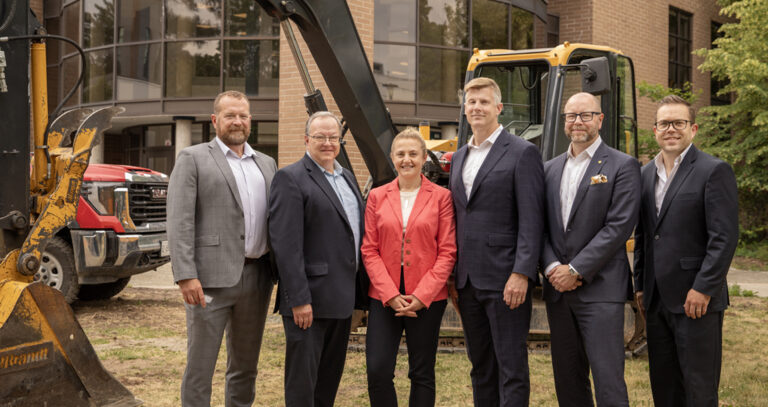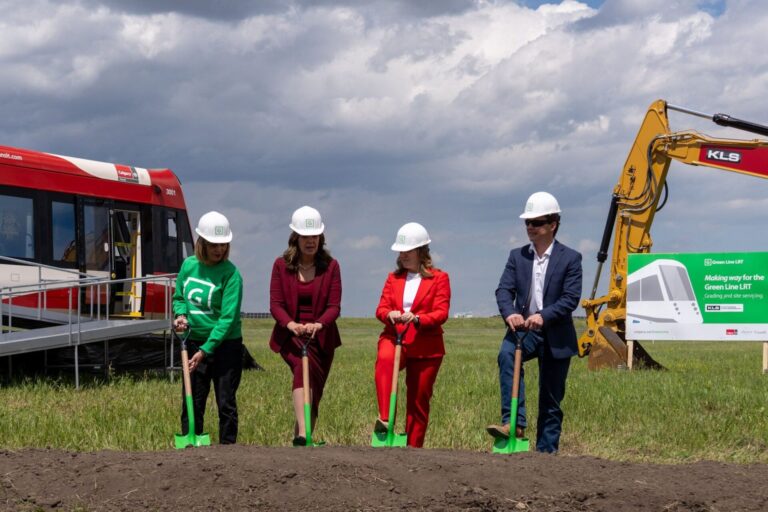Digital technology can help address the backlog of Canadian housing and infrastructure projects bogged down by unprecedented demand and a chronic shortage of skilled labour, finds new research from KPMG in Canada.
A new KPMG in Canada survey of 275 construction companies finds that nearly nine in 10 construction companies say the lack of skilled labour or trades is impacting their ability to bid on projects and/or meet project deadlines and that digital technology can help make their labour force more effective to address these shortages.
“Technology can help the construction industry address Canada’s housing and infrastructure challenges,” said Tom Rothfischer, partner, and National Industry Leader, Building, Construction, and Real Estate, KPMG in Canada. “Digital tools, if used smartly, save time and money, reduce waste, and improve worker safety and productivity. In short, they help get projects done on time or ahead of schedule and on budget.”
He notes that many technologies employed in the manufacturing sector can be deployed by the construction industry to increase productivity and reduce costs. 3D printing technologies in manufacturing have been adapted to the construction industry to lay concrete and build complex steel shapes. Robots can lay bricks and tie steel reinforcement bars. Drone-based surveying can help contractors quickly and accurately layout work, measure quantities, and monitor progress. Building information modelling (BIM) allows project teams to collaborate more effectively to develop innovative solutions to optimize project cost and schedule. Digital twin technologies build on BIM to integrate real-time data from a built asset with its exact 3D virtual replica to test ‘what-if’ scenarios, including the impact of design changes, construction sequencing, weather disruptions, and operational changes.
As in other countries, Canada’s construction industry, which spans residential and commercial real estate, industrial, institutional, civil, and infrastructure, has been slow to adopt new digital technologies. However, the pandemic, combined with the intensifying labour shortage, has proven to be the catalyst the industry needed to rethink how they go about their business.
“We’re seeing a definite recalibration taking place in the construction sector,” said Rothfischer. “While many are still just at the beginning of their digital build, leaders see the power of technology to reshape the way they work and plan to invest heavily in the coming years. But having the technology is only half the battle. The real advantage will come to those firms who effectively integrate it into their operations – from the back office to the construction site.”
Key survey findings
- 73 per cent think that the construction industry in Canada lags other countries in digital technology adoption
- 67 per cent say the impacts of the pandemic prompted them to invest in technology
- 86 per cent agreed that disruptive technologies can generate savings and efficiency, of whom 50 per cent agreed strongly
- 85 per cent believe disruptive technologies could make their companies more competitive
- 81 per cent say their management and back-office teams and 80 per cent say their project teams and labour are excited about and supportive of new technologies and approaches
- 46 per cent plan to spend more than 11 per cent of their corporate operating budget on tech and digital transformation, 33 per cent anticipate spending between 6-10 per cent, and 20 per cent plan to spend up to 5 per cent.
“Leading firms are already adopting technology to improve productivity and project management, safety on worksites, and decision-making,” said Mary Van Buren, president of the Canadian Construction Association (CCA). “There is a cost however to investing in digitization that isn’t necessarily shared among all parties in the procurement process. Margins are slim in construction, especially for the small- and medium-sized contractors, making it increasingly difficult for them to adopt these types of innovations in their business operations. This is why CCA continues to work with federal departments in an effort to modernize procurement processes that encourage innovation by supporting shared risk.”
Labour crunch hits projects
The KPMG survey found a Canadian construction industry grappling with a double whammy of unprecedented increased demand for housing and infrastructure projects, and a severe labour shortage that’s challenging the ability of companies to bid on projects and/or meet project deadlines.
To address this, almost all contractors are examining ways to alleviate current labour constraints to meet demands.
“The efficient allocation of trades is one of the industry’s most-pressing challenges and opportunities,” said Jordan Thomson, senior manager, Infrastructure Advisory, KPMG in Canada. “Many companies are deploying or planning to deploy digital tools to better improve efficiency on site and do more with less. The application of data analytics, wearables, and internet of thing sensors, and BIM can help to improve productivity, schedule efficiency, and quality, minimize waste, and improve worker safety.”
Yet, as companies embrace technologies, the composition of the workforce will also need to undergo change to incorporate new roles, such as software engineers, BIM designers, data analysts, and drone operators into the project team, said Thomson. For example, drones are increasingly used for planning and design, site analysis, topographic mapping, and land surveys, real-time monitoring, and on-site worker safety.
“With so many construction projects on the horizon, the only way companies will be able to compete, and finish the job on time and within budget is by digitizing and modernizing their operations and ensuring they fully harness the potential of digital technologies,” he said.
- 90 per cent of construction companies are currently experiencing a shortage of skilled labour or trades
- This jumps to 94 per cent in Quebec
- 86 per cent say that the shortage of skilled labour or trades is impacting their ability to bid on projects and/or meet project deadlines
- This jumps to 94 per cent in Quebec and 90 per cent in B.C.
- 86 per cent say that given current labour constraints, they may need to consider other alternatives, such as prefabrication and modularization and/or innovative new tools and machinery (94 per cent in Quebec)
- 89 per cent agree that better project management tools, such as analytics, BIM, digital twins, helps to address labour shortages and improves employee productivity
- 91 per cent believe the education system needs to be “much more flexible” to allow young people to pursue the trades
- 97 per cent of Quebec respondents agree
- 77 per cent say that digital transformation will require hiring new talent within their organization to a “great” and “considerable” extent (44 per cent), and to a “moderate” extent (33 per cent)
Featured image: (Getty Images)











